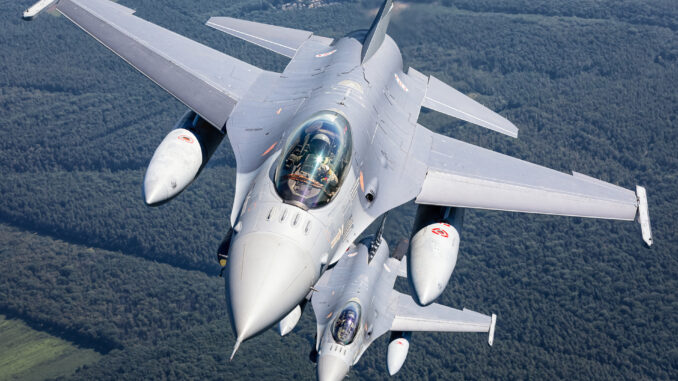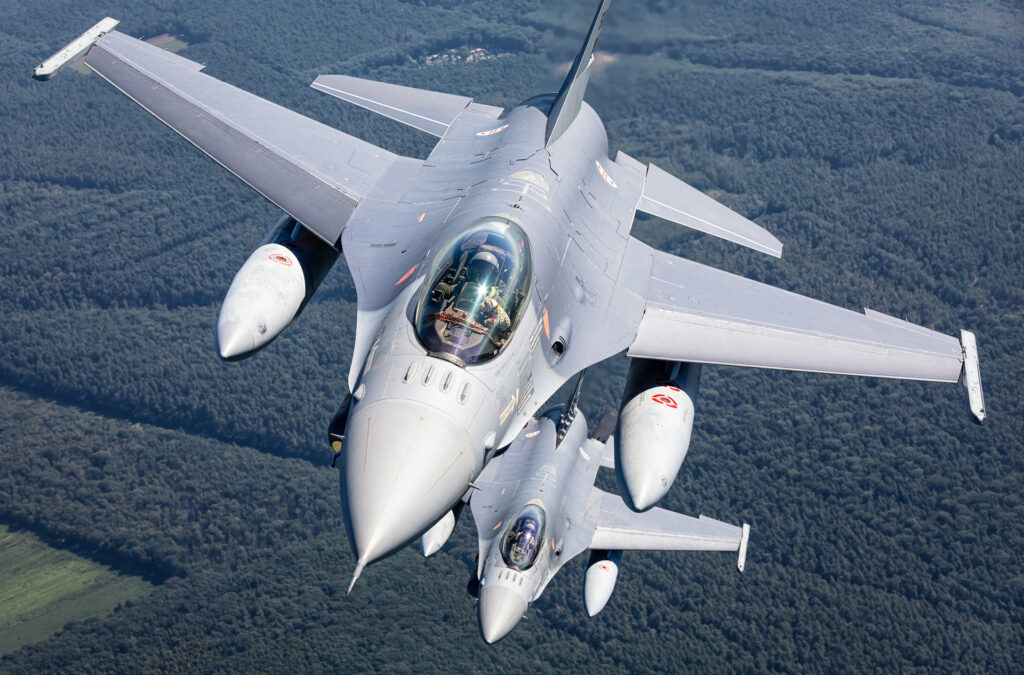
American F-16s arrived in Ukraine, marking a new era in the air war against Russia, with Ukrainian pilots trained in the United States and Europe.
In May 2024, the first American F-16s became operational in Ukraine. Ukrainian pilots, trained in the United States, Denmark and Romania, are now ready to use these advanced fighter aircraft. This transition marks a turning point in the air war against Russia, by strengthening Ukraine’s strike capabilities with cutting-edge technologies. Training, maintenance and infrastructure are at the heart of this strategic transformation, offering decisive advantages over Russian forces.
Training and transition of Ukrainian pilots
In May 2024, the first American F-16s were integrated into the Ukrainian Air Force. This step was made possible by intensive training of Ukrainian pilots, mainly at the US Air Force base in Arizona. This transition programme includes not only learning F-16 piloting techniques, but also acquiring English language skills, which are essential for communicating with American pilots, ground crews and air traffic controllers. English is the common language of international commercial aviation and global air traffic control. Additional training is currently being provided in Denmark and Romania, which share a border with Ukraine. The Netherlands and other NATO countries are also training Ukrainian technicians to maintain the F-16s, ensuring their continued operational capability.
Operational capability and logistical challenges
Ukrainian pilots, accustomed to operating Russian-designed fighters since the dissolution of the Soviet Union in 1991, have managed to shoot down more than 350 Russian aircraft. However, this has come at a high cost to Ukraine, which currently has only 56 operational Russian-designed fighters, compared with several hundred at the start of the conflict in 2022. Ukrainian pilots had to be creative to counter Russian air defences and interceptor aircraft. One effective tactic was to fly very close to the ground to avoid detection by Russian radars, then climb quickly to surprise enemy aircraft.
Because of the frequent Russian attacks on Ukrainian air bases, the pilots had to change their base of operations frequently. This meant constantly moving air traffic controllers, maintenance personnel and their equipment to accommodate the Ukrainian fighters. Ukrainian airbases were often repaired by local companies after the Russian attacks, which kept the Russians uncertain about their operational bases.

Improving infrastructure for the F-16
The arrival of the F-16 forced Ukraine to improve its runways, as the F-16’s engine is closer to the ground and can suck up debris on the runway. In the United States, runways are kept impeccable for this reason, and the Ukrainians will now have to adopt the same standards. Historically, Russian warplanes were designed to operate from rudimentary runways, including dirt runways.
Advantages of the F-16 and strategic implications
Ukrainian pilots who have completed their F-16 training are eager to use them against Russian forces. The F-16s are equipped with modern electronic systems that give them capabilities that Russian aircraft do not possess. Ukrainian pilots expect to increase the number of Russian aircraft shot down and carry out more precise ground attacks.
The integration of the F-16s marks a major strategic turning point in the air war in Ukraine. The advanced capabilities of the F-16s, combined with rigorous training and improved infrastructure, will enable Ukraine to strengthen its air defence and increase its offensive effectiveness. This development could also influence future military operations and defence doctrines in Eastern Europe.
Consequences and future prospects
The use of F-16s by Ukraine sends a clear message about the modernisation and adaptation of military capabilities in the face of contemporary threats. This transition also demonstrates the importance of international defence cooperation. Investment in training, maintenance and infrastructure not only strengthens Ukraine’s immediate combat capability, but also lays the foundations for long-term resilience in the face of aggression.
The introduction of US F-16s into Ukraine, supported by significant training and infrastructure improvements, represents a critical step forward in the air war against Russia. This initiative not only strengthens Ukraine’s military capabilities, but also underlines the importance of adaptability and international cooperation in modern conflicts.
War Wings Daily is an independant magazine.